
How to Use ESP32-Wroom-HW-394: Examples, Pinouts, and Specs
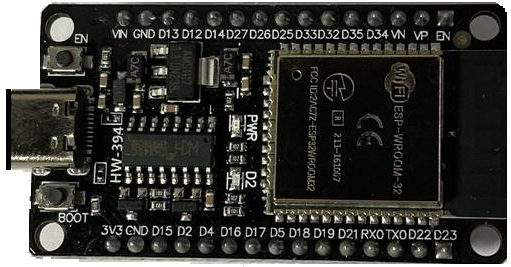
 Design with ESP32-Wroom-HW-394 in Cirkit Designer
Design with ESP32-Wroom-HW-394 in Cirkit DesignerIntroduction
The ESP32-Wroom-HW-394 is a powerful microcontroller module designed for IoT (Internet of Things) applications. It features integrated Wi-Fi and Bluetooth capabilities, making it ideal for wireless communication and smart device projects. With its dual-core processing power and a wide range of GPIO (General Purpose Input/Output) pins, the ESP32-Wroom-HW-394 is versatile and suitable for a variety of applications, including home automation, wearable devices, and industrial IoT systems.
Explore Projects Built with ESP32-Wroom-HW-394
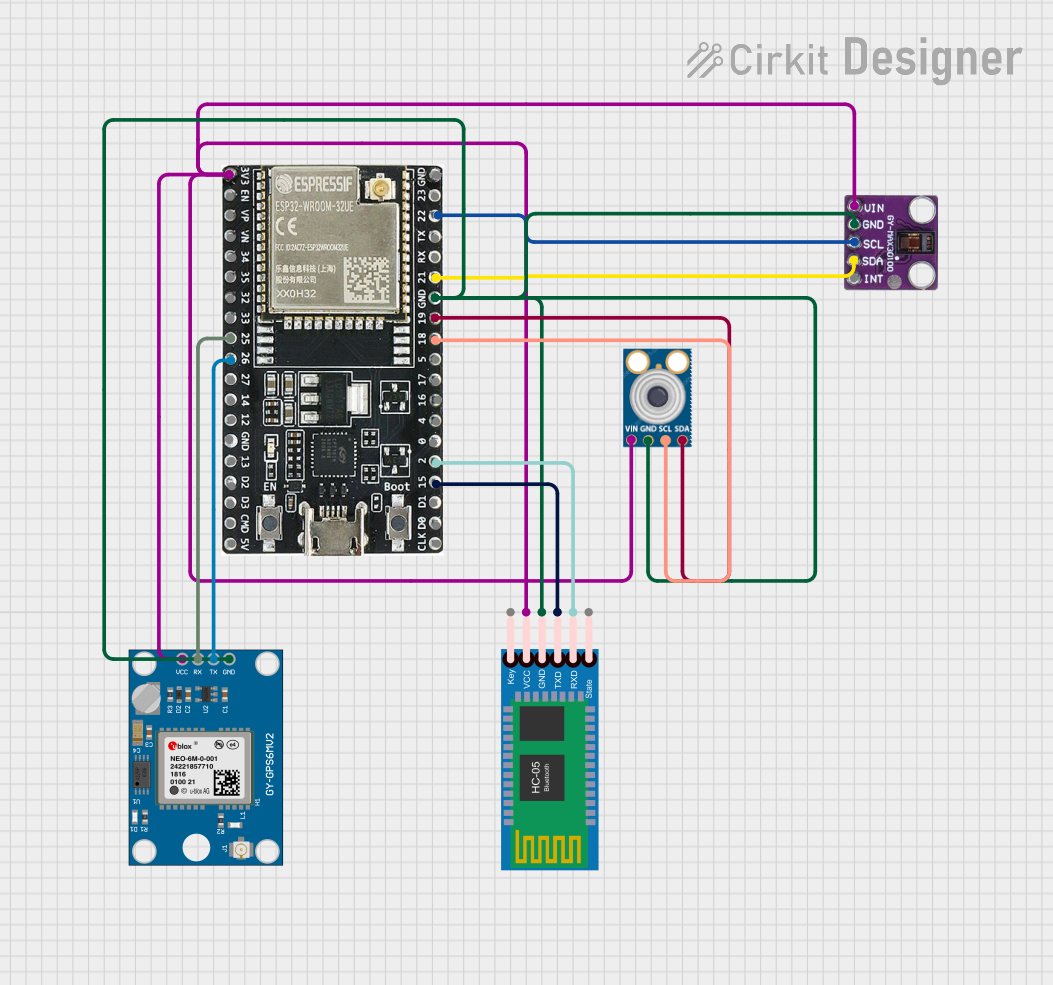
 Open Project in Cirkit Designer
Open Project in Cirkit Designer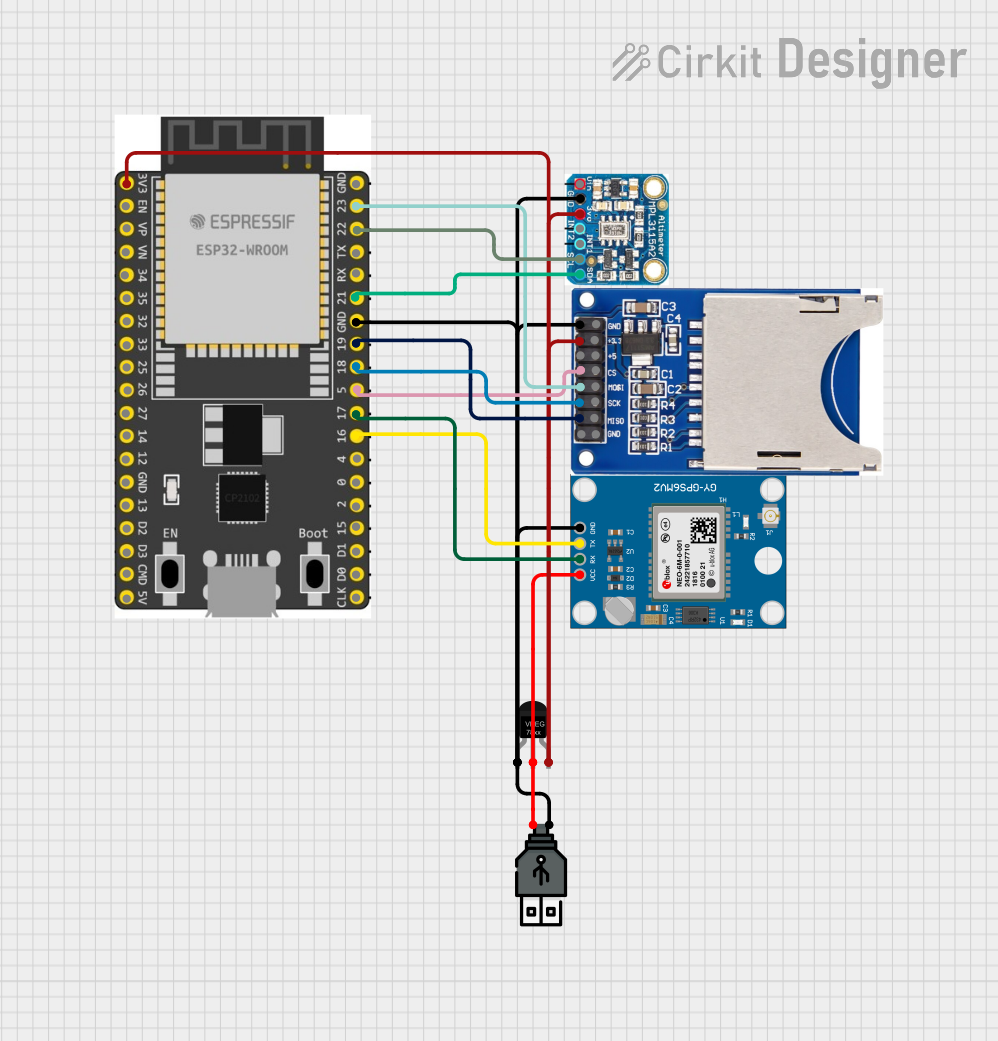
 Open Project in Cirkit Designer
Open Project in Cirkit Designer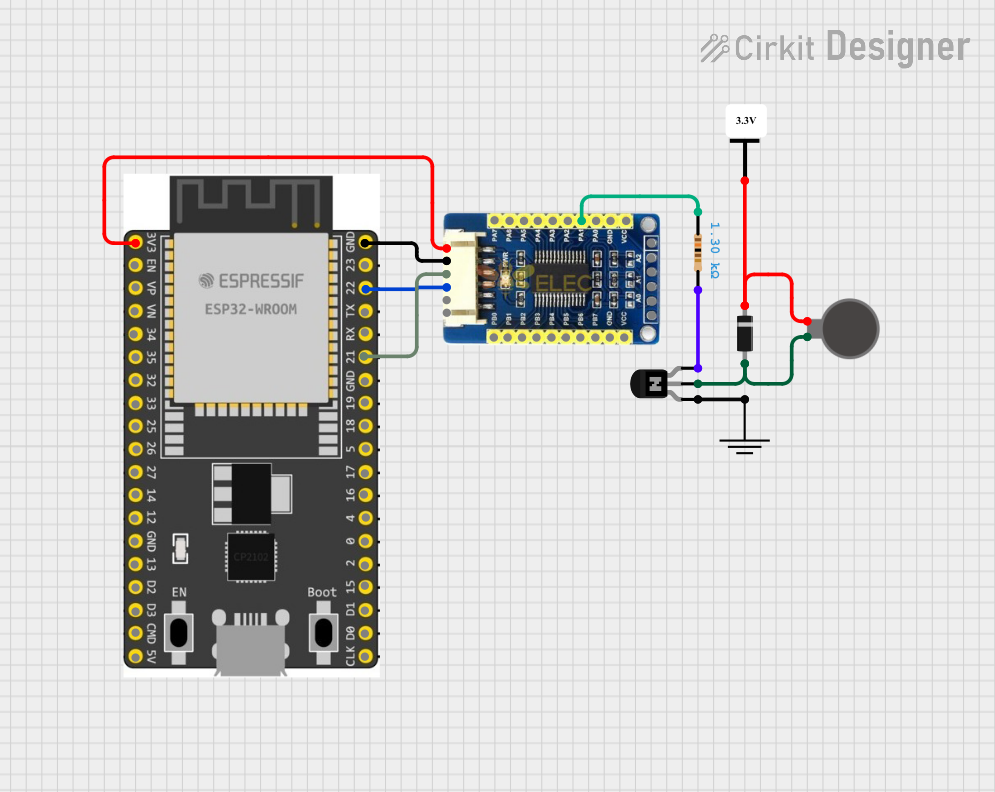
 Open Project in Cirkit Designer
Open Project in Cirkit Designer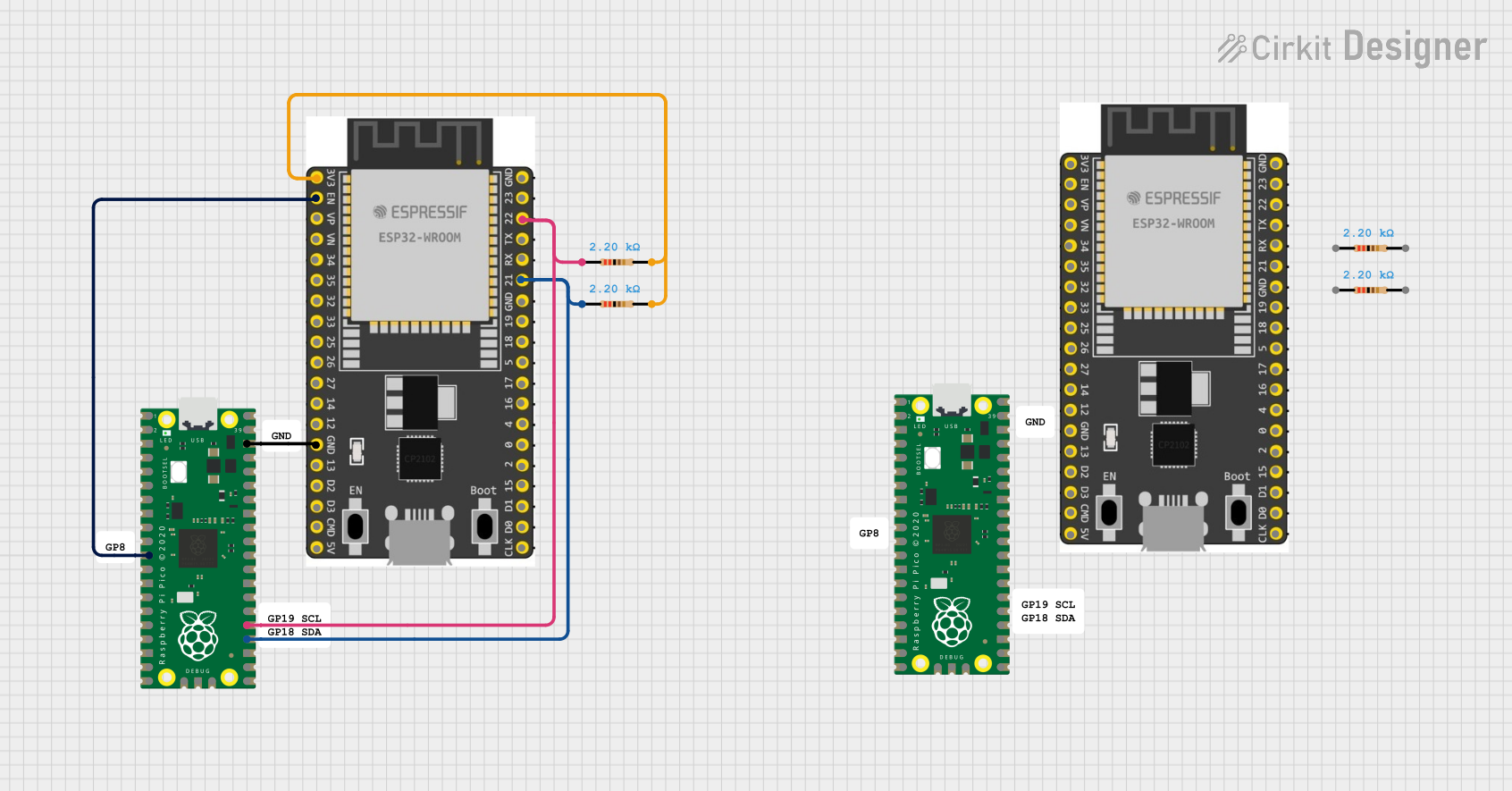
 Open Project in Cirkit Designer
Open Project in Cirkit DesignerExplore Projects Built with ESP32-Wroom-HW-394

 Open Project in Cirkit Designer
Open Project in Cirkit Designer
 Open Project in Cirkit Designer
Open Project in Cirkit Designer
 Open Project in Cirkit Designer
Open Project in Cirkit Designer
 Open Project in Cirkit Designer
Open Project in Cirkit DesignerCommon Applications and Use Cases
- Smart home devices (e.g., smart lights, thermostats)
- Wireless sensor networks
- Industrial automation and monitoring
- Wearable technology
- Robotics and drones
- Real-time data logging and cloud integration
Technical Specifications
The ESP32-Wroom-HW-394 is packed with features that make it a robust and flexible choice for developers. Below are its key technical specifications:
| Specification | Details |
|---|---|
| Microcontroller | Dual-core Xtensa® 32-bit LX6 processor |
| Clock Speed | Up to 240 MHz |
| Flash Memory | 4 MB (external) |
| SRAM | 520 KB |
| Wireless Connectivity | Wi-Fi 802.11 b/g/n, Bluetooth v4.2 + BLE |
| Operating Voltage | 3.3V |
| GPIO Pins | 34 (multipurpose, including ADC, DAC, PWM, I2C, SPI, UART) |
| ADC Channels | 18 (12-bit resolution) |
| DAC Channels | 2 |
| Communication Interfaces | UART, SPI, I2C, I2S, CAN, Ethernet MAC |
| Power Consumption | Ultra-low power consumption in deep sleep mode (as low as 10 µA) |
| Operating Temperature | -40°C to 85°C |
| Dimensions | 18 mm x 25.5 mm |
Pin Configuration and Descriptions
The ESP32-Wroom-HW-394 has a total of 38 pins. Below is a table describing the key pins and their functions:
| Pin Number | Pin Name | Function |
|---|---|---|
| 1 | EN | Enable pin. Pull high to enable the module. |
| 2 | IO0 | GPIO0. Can be used for general I/O or boot mode selection. |
| 3 | IO2 | GPIO2. General-purpose I/O. |
| 4 | IO4 | GPIO4. General-purpose I/O. |
| 5 | IO5 | GPIO5. General-purpose I/O. |
| 6 | IO12 | GPIO12. Can be used as ADC or general-purpose I/O. |
| 7 | IO13 | GPIO13. Can be used as ADC or general-purpose I/O. |
| 8 | IO14 | GPIO14. Can be used as ADC or general-purpose I/O. |
| 9 | IO15 | GPIO15. Can be used as ADC or general-purpose I/O. |
| 10 | IO16 | GPIO16. General-purpose I/O. |
| 11 | GND | Ground. Connect to the ground of the power supply. |
| 12 | 3V3 | 3.3V power input. |
| 13 | TXD0 | UART0 Transmit pin. |
| 14 | RXD0 | UART0 Receive pin. |
| 15 | ADC1_CH0 | ADC Channel 0. Can be used for analog input. |
| 16 | DAC1 | DAC Channel 1. Can be used for analog output. |
For a complete pinout, refer to the official datasheet.
Usage Instructions
How to Use the ESP32-Wroom-HW-394 in a Circuit
- Powering the Module:
- Connect the
3V3pin to a 3.3V power source. - Connect the
GNDpin to the ground of the power source.
- Connect the
- Programming the Module:
- Use a USB-to-Serial adapter to connect the module to your computer.
- Connect the
TXD0pin to the RX pin of the adapter and theRXD0pin to the TX pin of the adapter. - Use the
ENpin to reset the module if needed.
- Interfacing with Peripherals:
- Use the GPIO pins for digital input/output.
- Use ADC pins for analog input and DAC pins for analog output.
- Use I2C, SPI, or UART for communication with other devices.
Important Considerations and Best Practices
- Voltage Levels: Ensure all connected devices operate at 3.3V logic levels to avoid damaging the module.
- Deep Sleep Mode: Use deep sleep mode to conserve power in battery-powered applications.
- Antenna Placement: Ensure the onboard antenna has sufficient clearance from metal objects to avoid interference.
- Boot Mode: To enter bootloader mode, hold GPIO0 low while resetting the module.
Example Code for Arduino UNO
The ESP32-Wroom-HW-394 can be programmed using the Arduino IDE. Below is an example of how to connect the module to Wi-Fi and blink an LED:
#include <WiFi.h> // Include the WiFi library for ESP32
const char* ssid = "Your_SSID"; // Replace with your Wi-Fi network name
const char* password = "Your_Password"; // Replace with your Wi-Fi password
const int ledPin = 2; // GPIO2 is connected to the onboard LED
void setup() {
Serial.begin(115200); // Initialize serial communication
pinMode(ledPin, OUTPUT); // Set GPIO2 as an output pin
// Connect to Wi-Fi
Serial.print("Connecting to Wi-Fi");
WiFi.begin(ssid, password);
while (WiFi.status() != WL_CONNECTED) {
delay(500);
Serial.print(".");
}
Serial.println("\nWi-Fi connected!");
Serial.print("IP Address: ");
Serial.println(WiFi.localIP()); // Print the module's IP address
}
void loop() {
digitalWrite(ledPin, HIGH); // Turn the LED on
delay(1000); // Wait for 1 second
digitalWrite(ledPin, LOW); // Turn the LED off
delay(1000); // Wait for 1 second
}
Troubleshooting and FAQs
Common Issues and Solutions
Module Not Connecting to Wi-Fi:
- Ensure the SSID and password are correct.
- Check if the Wi-Fi network is within range.
- Verify that the module's antenna is not obstructed.
Module Not Responding:
- Check the power supply voltage (must be 3.3V).
- Ensure the
ENpin is pulled high. - Verify the connections to the USB-to-Serial adapter.
GPIO Pins Not Working:
- Ensure the pins are not being used for other functions (e.g., boot mode).
- Check for short circuits or incorrect wiring.
FAQs
Q: Can the ESP32-Wroom-HW-394 operate on 5V?
A: No, the module operates at 3.3V. Using 5V can damage the module.
Q: How do I update the firmware?
A: Use the ESP32 Flash Download Tool or the Arduino IDE to upload new firmware.
Q: Can I use the ESP32-Wroom-HW-394 with a battery?
A: Yes, you can use a 3.7V LiPo battery with a voltage regulator to provide 3.3V to the module.
Q: What is the maximum range of the Wi-Fi?
A: The Wi-Fi range is approximately 50 meters indoors and 200 meters outdoors, depending on the environment.